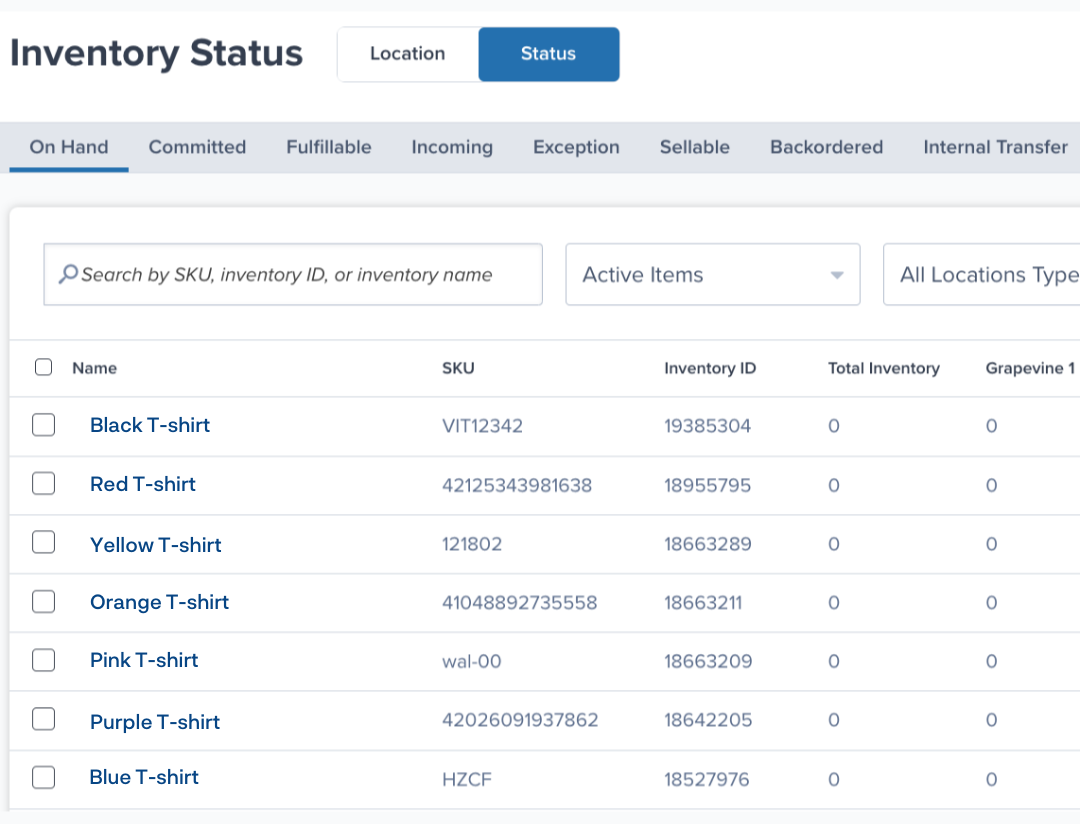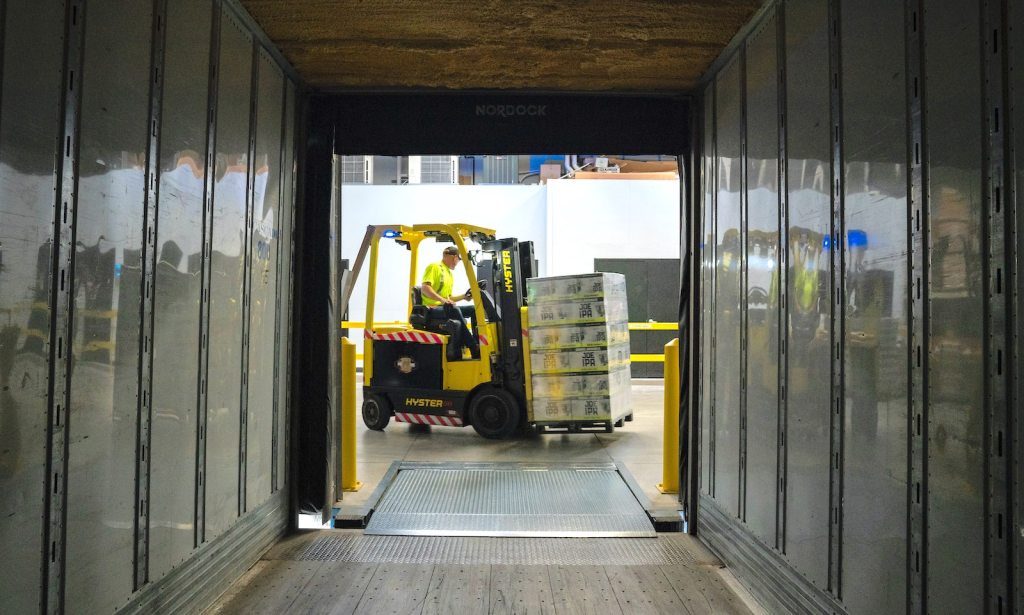Table of Contents
** Minutes
What is the reorder quantity formula?
Reorder quantity vs. reorder points
Reorder quantity & reorder points: why you need both
Reorder quantity formula: calculate reorder quantity in 3 steps
Put ordering and inventory management on autopilot with ShipBob
Inventory management is one of the more complex and important aspects of running an ecommerce business. And the more SKUs you have, it’s increasingly difficult to stay on top of stock levels.
Without proper inventory management, you’re at risk of running out of money and having too much inventory (that could potentially expire or become obsolete before you sell it), or running out of stock and losing customers.
Having the right amount of product is a balancing act. That’s why ecommerce businesses rely on the reorder quantity formula. Similar to an economic order quantity (EOQ), you are trying to find the optimal order quantity to minimise logistics costs, warehousing space, stockouts, and overstock costs.
Let’s dive into how understanding reorder quantity helps calculate the amount of inventory you need to buy in order to have the right stock levels.
What is reorder quantity?
Reorder quantity is the total number of product units you request from a manufacturer or supplier on an inventory replenishment purchase order. The exact amount should not be so high that you have too much capital tied up in inventory and subsequent warehousing costs, but not so low that there’s not enough safety stock and you risk selling out before you can get the next batch of inventory.

What is the reorder quantity formula?
The reorder quantity calculation is done by using a formula that multiplies average daily units sold by the average lead time:
Optimal Reorder Quantity for a SKU = Avg. Daily Units Sold x Avg. Lead Time
If your average daily sales for a SKU is 25 and the average manufacturing lead time is 30 days (meaning, how long it takes from when you place a purchase order with your manufacturer to when you receive the product in your warehouse), then your reorder quantity is 750 units.
However, if you are planning for any big promotions, thinking through holiday inventory preparations, or working on demand forecasting efforts, and you believe that your inventory velocity will increase, you can increase your reorder quantity so that you don’t run out of stock prematurely.
If your inventory days on hand metric is low, meaning you sell through inventory quickly so it’s not sitting around your warehouse for long, then your reorder quantity and inventory turnover rate will be high.
Reorder quantity vs. reorder points
We occasionally see confusion between a reorder quantity and a reorder point. Reorder quantity is the number of products you order from a supplier, where the reorder point is the predetermined number of units you have left on hand at which you need to reorder more inventory from your supplier or you will run out.
In other words, the reorder point is the quantity that will last you long enough until the reordered quantity arrives and becomes available in your ecommerce warehouse.
That said, the reorder point formula is the sum of the total units needed to get you through the manufacturing lead time wait plus some safety stock. If you foresee either delays with your manufacturer or your sales increasing, you should increase your reorder point so that you reorder inventory sooner.
Reorder quantity & reorder points: why you need both
Reorder quantity and reorder points work in tandem to achieve optimal inventory management. Once you receive a reorder point alert, you can calculate the reorder quantity to determine the exact inventory replenishment needed in your fulfilment centre.
Never run out of stock
When products are out of stock, you risk losing customers. You can always offer backorders or split shipments, but those solutions don’t provide a good customer experience.
Reorder points help ensure a replenishment in time before running out, while reorder quantity ensures that you order enough to last until your next order. These equations and processes don’t have to be manual, as inventory management software can calculate reorder quantity, let you set reorder points, and provide inventory reporting.
When a SKU hits its reorder point, there should be a notification that alerts you so that you know you need more inventory as it is the minimum threshold to prevent stockouts.
“ShipBob helps us a lot with planning inventory reorders, seeing when SKUs are going to run out, and we can even set up email notifications so that we’re alerted when a SKU has less than a certain quantity left. There is a lot of value in their technology.”
Oded Harth, CEO & Co-Founder of MDacne

Maximise cost-efficiency
By calculating reorder quantity and reorder points, you can keep just enough inventory to meet demand without tying up too much capital — also known as just-in-time inventory, which is designed to cut costs, increase efficiency, and decrease waste by receiving goods when they are needed. If your stock levels are too high, you’ll need to expand your inventory storage capabilities or even find new warehouses.
“From expanding into a second ShipBob fulfilment centre, we are excited to gain a 13% savings to our bottom line. With their software, we can see inventory reconciliations and easily view SKU velocity, transit times, and inventory distribution recommendations. ShipBob also provides the storage conditions we need to ensure our highest-quality food products are stored and delivered to our customers in a safe and effective manner.”
Pablo Gabatto, Business Operations Manager at Ample Foods

Simplify inventory management
With reorder points and reorder quantity, you know exactly how much to reorder and when you need to reorder. You can set up electronic notifications in your ecommerce inventory management system, view real-time inventory tracking, and view changes in demand over time.

Reorder quantity formula: calculate reorder quantity in 3 steps
The reorder quantity formula is simple: just Average Daily Usage x Average Lead Time. Let’s look at how the formula works in detail.
Step 1: Find your Average daily usage (ADU)
What is it? How many units of your product are sold per day.
Thirty days is typically a reasonable timeframe, but it’s dependent on the time of year. For example, if you need to order products in time for Black Friday, your ADU should be calculated based on the previous year’s Black Friday ADU.
Step 2: Find your Average lead time (ALT)
What is it? How long it takes from when a purchase order is placed with a supplier to when you receive the inventory (or when the replenishment is stowed in your fulfilment centre if you outsource fulfilment). ALT is measured in days.
If you reordered inventory on June 1, and that new inventory is ready to be used to fulfil customer orders on June 30, then your ALT is 29 days.
Step 3: Calculate! Reorder Quantity = ADU x ALT
Once you multiply ADU and ALT, you’ll know the amount of inventory you need to reorder. Let’s look at an example of how to calculate reorder quantity for an individual product:
- ADU = 10 units
- ALT = 29 days
- Your reorder quantity is equal to 290
Note: Be sure to recalculate your reorder quantity often, especially as your order volume increases and if you experience any seasonality.
Put ordering and inventory management on autopilot with ShipBob
At a certain inflection point or level of growth, direct-to-consumer brands have to upgrade their ecommerce fulfilment strategy. They can build and invest in their own logistics infrastructure (which takes time and money), or outsource fulfilment to a 3PL like ShipBob.
ShipBob is a tech-enabled fulfilment company that provides order fulfilment services, technology, and support needed for ecommerce brands to grow. You can offer 2-day shipping, and gain back time to focus on why you started your business in the first place.
“Now we’re at two ShipBob fulfilment centres, and being able to have the analytics and see how everything is working together has been extremely helpful for me on the operations end. It definitely helps me with inventory management and seeing what’s going on. Even though we’ve grown, I haven’t spent more time on the business from an operations standpoint.”
Dana Varrone, Director of Operations at Organic Olivia
Ecommerce businesses also choose ShipBob to outsource retail fulfilment for the following reasons:
Built-in inventory management
Even with your inventory in our warehouses, you’re still able to view inventory counts in the ShipBob dashboard. You can also set reorder points and quantity from your ShipBob dashboard, so you never have your stock levels hit zero.

Distributed inventory
With ShipBob’s international fulfilment network, you can store products in locations closest to your customers. Shipping costs and delivery times are further reduced because your products are closer to customers. Best of all, if you split inventory across multiple ShipBob fulfilment centres, you can track all inventory from one single dashboard.
Responsive customer care
Questions about inventory? Our fulfilment professionals and support teams are available to help you and resolve any problems you may face.
“From day one, we’ve appreciated the hands-on time spent with us. ShipBob has been a great partner as we have grown. They work hard to understand our needs and offer more flexibility than other 3PLs. They have used their expertise to give us business-specific solutions that have really made a difference.
Some of the reports that ShipBob provides show their dedication to transparency — things like actual transit times and whether they’re hitting their service-level agreements. They are really committed to their customers and keeping themselves accountable.”
Pablo Gabatto, Business Operations Manager at Ample Foods
Conclusion
Knowing how much inventory to reorder is crucial to managing a successful ecommerce business. With the reorder quantity formula, you can rest easy knowing you’re ordering the right number of products for more optimised inbound and outbound logistics workflows.
“Off the bat, I liked that I would be able to control multiple warehouses through one page with ShipBob. With my old 3PL, I could never just open a page and get the info I wanted. I had to click several times, then export it, and try to make sense of it. ShipBob lets you manage your inventory while providing important data in a very digestible way.”
Wes Brown, Head of Operations at Black Claw LLC
To learn how ShipBob helps fast-growing ecommerce businesses with inventory management and fulfilment, click the button below.





